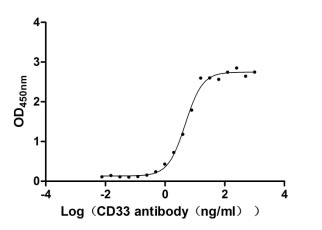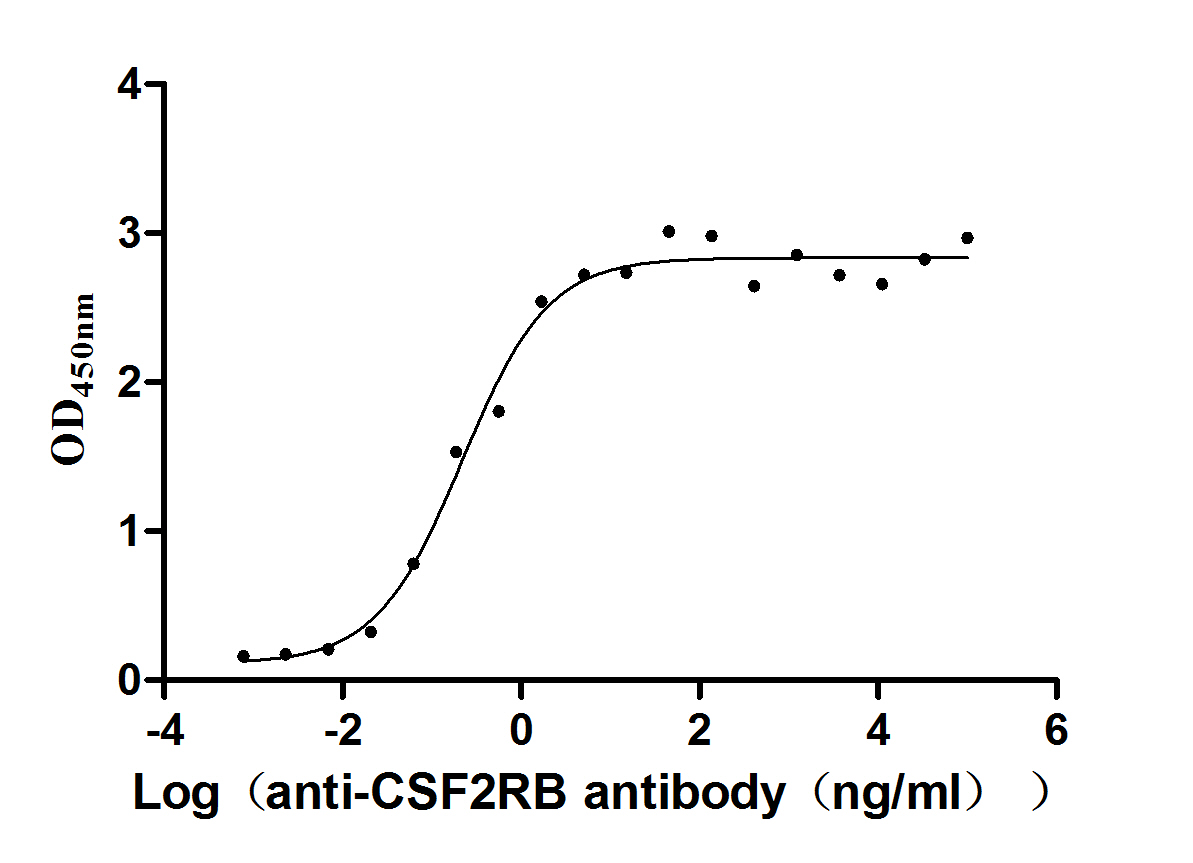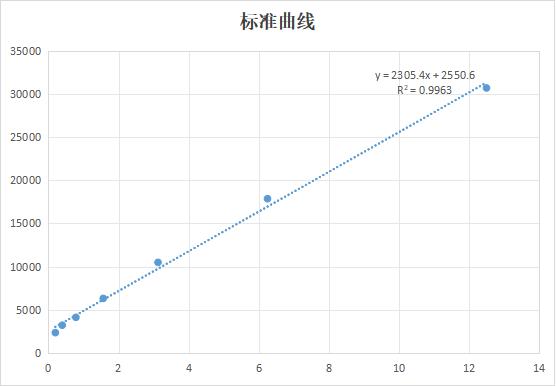Recombinant Arabidopsis thaliana Pattern formation protein EMB30 (EMB30), partial
-
中文名稱:擬南芥GN重組蛋白
-
貨號:CSB-EP670360DOA-B
-
說明書:
-
規格:
-
來源:E.coli
-
共軛:Avi-tag Biotinylated
E. coli biotin ligase (BirA) is highly specific in covalently attaching biotin to the 15 amino acid AviTag peptide. This recombinant protein was biotinylated in vivo by AviTag-BirA technology, which method is BriA catalyzes amide linkage between the biotin and the specific lysine of the AviTag.
-
其他:
產品詳情
-
純度:>85% (SDS-PAGE)
-
基因名:GN
-
Uniprot No.:
-
別名:GN; EMB30; GBF3; MIZ2; VAN7; At1g13980; F16A14.20; F7A19.7ARF guanine-nucleotide exchange factor GNOM; Pattern formation protein EMB30; Protein EMBRYO DEFECTIVE 30; Protein MIZU-KUSSEI2; Protein VASCULAR NETWORK 7
-
種屬:Arabidopsis thaliana (Mouse-ear cress)
-
蛋白長度:Partial
-
蛋白標簽:Tag?type?will?be?determined?during?the?manufacturing?process.
The tag type will be determined during production process. If you have specified tag type, please tell us and we will develop the specified tag preferentially. -
產品提供形式:Lyophilized powder
Note: We will preferentially ship the format that we have in stock, however, if you have any special requirement for the format, please remark your requirement when placing the order, we will prepare according to your demand. -
復溶:We recommend that this vial be briefly centrifuged prior to opening to bring the contents to the bottom. Please reconstitute protein in deionized sterile water to a concentration of 0.1-1.0 mg/mL.We recommend to add 5-50% of glycerol (final concentration) and aliquot for long-term storage at -20℃/-80℃. Our default final concentration of glycerol is 50%. Customers could use it as reference.
-
儲存條件:Store at -20°C/-80°C upon receipt, aliquoting is necessary for mutiple use. Avoid repeated freeze-thaw cycles.
-
保質期:The shelf life is related to many factors, storage state, buffer ingredients, storage temperature and the stability of the protein itself.
Generally, the shelf life of liquid form is 6 months at -20°C/-80°C. The shelf life of lyophilized form is 12 months at -20°C/-80°C. -
貨期:Delivery time may differ from different purchasing way or location, please kindly consult your local distributors for specific delivery time.Note: All of our proteins are default shipped with normal blue ice packs, if you request to ship with dry ice, please communicate with us in advance and extra fees will be charged.
-
注意事項:Repeated freezing and thawing is not recommended. Store working aliquots at 4°C for up to one week.
-
Datasheet :Please contact us to get it.
靶點詳情
-
功能:Activates the ARF proteins by exchanging bound GDP for free GTP. Plays a role in vesicular protein sorting. Acts as the major regulator of endosomal vesicle trafficking but is also involved in the endocytosis process. Could function redundantly with GNL1 in the retrograde Golgi to endoplasmic reticulum trafficking. Regulates vesicle trafficking required for the coordinated polar localization of auxin efflux carriers which in turn determines the direction of auxin flow. Mediates the sorting of PIN1 from endosomal compartments to the basal plasma membrane and the polarization of PIN3 to the bottom side of hypocotyl endodermal cells. Involved in the specification of apical-basal pattern formation in the early embryo and during root formation. Required for correct cell wall organization leading to normal cell adhesion during seedling development. Plays also an essential role in hydrotropism of seedling roots.
-
基因功能參考文獻:
- GNOM preferentially localizes to a subdomain of the Golgi apparatus and redefined a role of this organelle in regulating endosomal function. PMID: 25012191
- data confirm a role for GNOM in endoplasmic reticulum (ER)-Golgi trafficking and reveal that a GNL1/GNOM-mediated early secretory pathway selectively regulates PIN1 basal polarity establishment in a manner essential for normal plant development PMID: 25646449
- GNOM-dependent auxin transport could affect local auxin biosynthesis. PMID: 24453227
- Therefore, an unknown GNOM-mediated vesicle trafficking system may mediate root hydrotropism and phototropism independently of PIN trafficking. PMID: 24388525
- GNOM is required for the establishment of the auxin response maximum for lateral root (LR) initiation, probably through the regulation of local and global auxin distribution in the root. PMID: 23390202
- Data conclude that provascular expression of GNOM is vital for both apical and basal tissue organization, and that epidermal GNOM expression is required for radial-to-bilateral symmetry transition of the embryo. PMID: 21138974
- PID and GNOM antagonistically regulate PIN polarity and plant development. Interference with GNOM activity leads to dynamic PIN transcytosis between different sides of the cell. PMID: 20040538
- large ARF-GEFs of the GBF1 class perform a conserved role in endoplasmic reticulum-Golgi trafficking and secretion, which is done by GNL1 and GNOM in Arabidopsis PMID: 17653190
- Distinct N-terminal domain of GNOM mediates dimerization and in addition interacts heterotypically with two other conserved domains in vivo. PMID: 18203920
- Pharmacological or genetic interference with GNOM leads specifically to apicalization of basal cargoes such as PIN1. PMID: 18394892
- GNOM-mediated vesicular trafficking plays an essential role in hydrotropism of seedling roots in Arabidopsis. PMID: 19052151
顯示更多
收起更多
-
亞細胞定位:Cytoplasm, cytosol. Endosome membrane; Peripheral membrane protein; Cytoplasmic side. Cell membrane; Peripheral membrane protein; Cytoplasmic side. Note=Soluble and partially membrane-bound.
-
組織特異性:Stems, leaves, flowers, siliques, floral inflorescence and roots. Expressed in the whole plant (at the protein level).
-
數據庫鏈接:
Most popular with customers
-
Recombinant Human Myeloid cell surface antigen CD33 (CD33), partial (Active)
Express system: Mammalian cell
Species: Homo sapiens (Human)
-
Recombinant Human Cytokine receptor common subunit beta (CSF2RB), partial (Active)
Express system: Mammalian cell
Species: Homo sapiens (Human)
-
Recombinant Human Urokinase-type plasminogen activator(PLAU) (Active)
Express system: Mammalian cell
Species: Homo sapiens (Human)
-
Recombinant Human Tumor necrosis factor ligand superfamily member 15(TNFSF15) (Active)
Express system: Mammalian cell
Species: Homo sapiens (Human)





-AC1.jpg)









